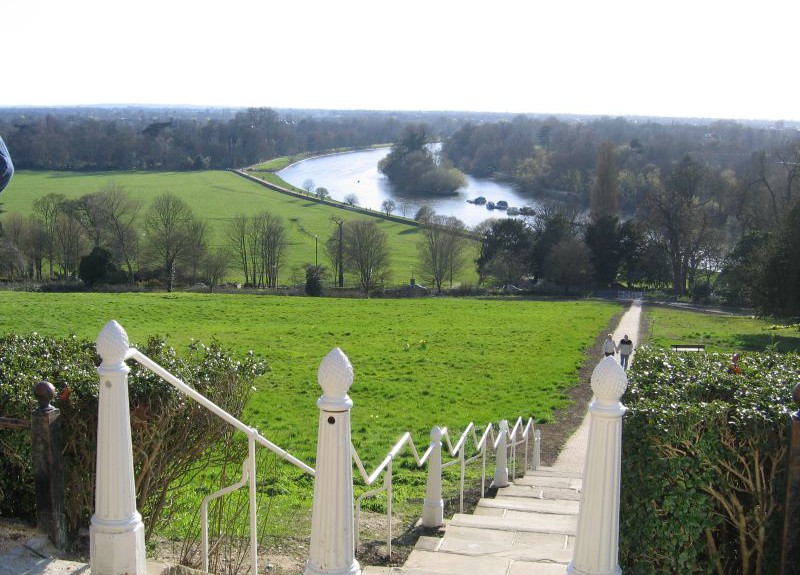As part of a continuing series, ArchitectureRichmond has documented the cities that comprise our five active Sister City partnerships, in order to learn more about similar urban environments throughout the world as a point of reference for our own development.
Richmond-upon-Thames is the Sister City most familiar to Virginians, as it is our capital’s namesake. Not a city itself, Richmond-upon-Thames is a borough of London, England with a population of 190,000. Richmond, the principal town in the borough, has a history dating back over 1,000 years and remains the area’s economic and urban center. Barnes and East Sheen are satellite centers in the borough, which is a London bedroom community home to some of the most affluent people in England. Unsurprisingly, Richmond is rated as having some of the country’s happiest residents.
Richmond Palace was built in 1501 by King Henry VII, formerly the Earl of Richmond, and served as the catalyst for development in the surrounding town. The borough became more urbanized in the 18th and 19th centuries due to the growth in population and density of central London. Despite the continued growth of London, now the largest city in the European Union, Richmond-upon-Thames has been able to retain a high proportion of green space. The borough is famous for its parks and open spaces such as Richmond Palace, The Richmond Green, Hampton Court Palace, and Kew Gardens. This is one of the borough’s defining characteristics and has added to its appeal as a residential hot spot. A connection is easily drawn to our own city with its extensive park system, botanical gardens, and verdant manor homes such as Maymont, Wilton, and Agecroft Hall, the latter two imported from England.
Many of the green spaces in the borough have been sustained by their protection under English law. Palaces and parks alike have been given special historic status based on their significance. No space in Richmond-upon-Thames has a more unique protection than Richmond Hill. The view from the top of the hill was protected in 1902 by a special act of Parliament and is the only such provision in all of England.
The view from Richmond Hill has a meaningful place in English history. English writer and poet Sir Walter Scott said the view presented “an unrivaled landscape.” It has also been painted by notable artists such as Sir Joshua Reynolds and J.M.W. Turner. The most important legacy of this view is not in England, however, but across the Atlantic in our own Richmond, Virginia. William Byrd II, who had spent some of his childhood in Richmond-upon-Thames, named our city Richmond after seeing the similarities between the view of the Thames in England and the view of the James in Virginia.
Richmond-upon-Thames’ population continues to grow as competition for space in London’s urban core intensifies and as some wealthy residents seek garden-like respite in the outer boroughs. Richmond’s development continues, and notable modern architects like David Chipperfield and James Stirling have built there. The borough also served as the training grounds for the Chinese, Irish, and South African teams in the London 2012 Olympic Games.
D.OK.


1 Comment
Curious that you mention Chipperfield and Stirling yet no mention that the photo used is of Richmond Riverside by Quinlan and Francis Terry, which is entirely a 20th Century project. Terry is of course the architect of HRH Prince Charles’ pet project Poundbury.
Absolutely nothing in the photo shown existed before 1984. Of course the architects hate it but by the photo alone you can tell people love this place. Note too that Quinlan Terry, in collaboration with local Glave and Holmes, built a pair of buildings in Williamsburg at the market square.
Thanks for posting! Beautiful stuff there!
Write a Comment